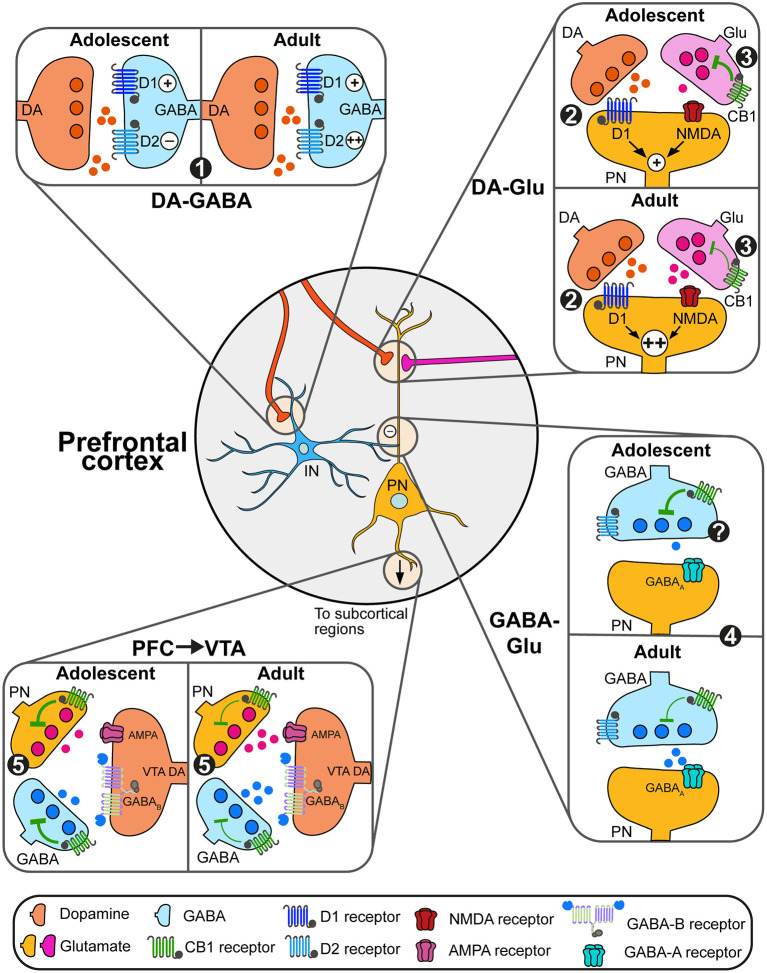Figure 2.
Adolescent changes in the modulation of prefrontal circuits by dopamine and endocannabinoids. (1) During adolescence, dopamine (DA, orange) increases the excitability of prefrontal GABAergic interneurons (blue) solely through D1 actions. At adulthood, dopamine facilitates interneurons excitability through both D1 and D2 receptors, which may change GABAergic control of pyramidal neuron (PN) activity. (2) Dopamine actions through D1 receptors enhance glutamatergic NMDA signaling on glutamate (Glu, pink and orange) neurons. This effect is more robust during late adolescence/adulthood, allowing the emergence of persistent depolarizations of pyramidal neurons (PN, orange). (3) eCB retrograde control (green) of glutamate transmission decreases between adolescence and adulthood, likely due to changes in expression levels of CB1 receptors. (4) At adulthood, the combined action of dopamine on D2 receptors and eCB signaling control the activity of plasticity of GABAergic synapses on PN. Changes in this process during adolescence remain to be demonstrated. (5) PN controls the activity of subcortical circuits. Within the VTA for instance, both PN glutamate transmission and local GABAergic transmission control the activity of DA neurons and DA release. Developmental changes in eCB signaling through the expression of CB1 receptors on PN and GABAergic neurons may change this regulation.

